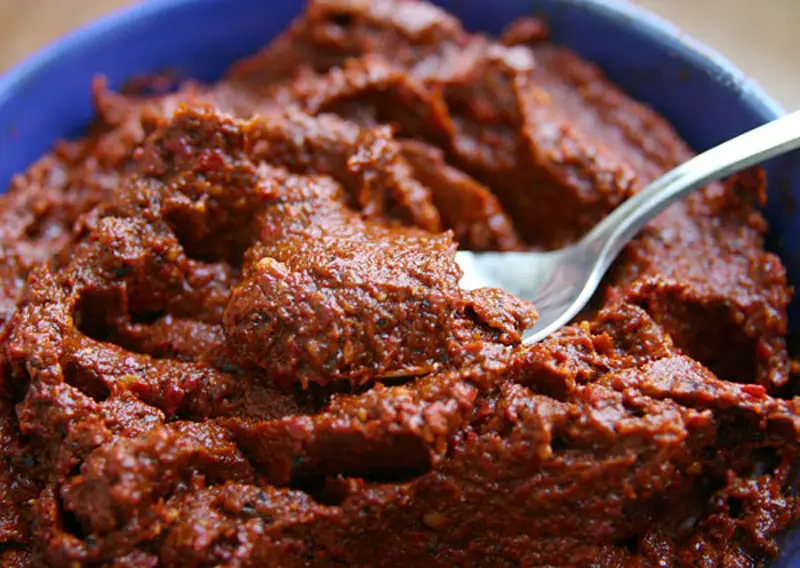Adzhika (Аджика) is a spicy sauce. It is sometimes a thick red or green paste and sometimes more of a salsa or ketchup-like substance. Generally, thicker versions will be hotter and often considered more authentic.
Adzhika is an aromatic and spicy sauce native to the Caucasus that is popular throughout Russia and the former USSR. The basic ingredients of adzhika are hot red peppers, garlic, salt and some mixture of spices; beyond that, it’s hard to generalize.
Some purists insist that a proper adzhika is made only from ground herbs and spices (such as coriander, dill, blue fenugreek, garlic, or the Georgian mixture called хмели-сунели) and water or vinegar. Other versions, especially commercial ones, can be more liquid thanks to pureed tomato or plum; some varieties are coarser, drier pastes with a texture similar to Italian pesto. Some types include carrots, onions, apples, or herbs like “тархун” (tarragon), coriander, or parsley. Many incarnations have walnuts as an ingredient. Adzhika is typically red in color, but there are also green varieties.
 In fact, there seem to be as many variations of adzhika as there are putative origins of the spread. Depending whom you ask, adzhika is either a specifically Abkhazian, Armenian, or Dagestani creation, native to Georgia or to the entire Caucasus region, or even Turkish in origin. Local cooks tend to vary the basic recipe to make the best use of local spices, herbs, and vegetables and to cater for personal tastes – so, strictly speaking, there may be as many different versions as there are individual cooks.
In fact, there seem to be as many variations of adzhika as there are putative origins of the spread. Depending whom you ask, adzhika is either a specifically Abkhazian, Armenian, or Dagestani creation, native to Georgia or to the entire Caucasus region, or even Turkish in origin. Local cooks tend to vary the basic recipe to make the best use of local spices, herbs, and vegetables and to cater for personal tastes – so, strictly speaking, there may be as many different versions as there are individual cooks.
How It Earned Its Name
(Почему aджика носит такое название?)
The word “adzhika” is most likely a corruption of an Abkhazian term: “апырпыл-джика,” or, literally, “peppery salt.” Abkhazia is currently a disputed territory internationally recognized as part of Georgia, but de-facto independent.
According to one version of adzhika’s creation myth, it was invented by Abkhazian shepherds whose diet was comprised primarily of meat and dairy, the products their herds could provide. Bread was scarce in the mountains, and salt even scarcer – so much so, in fact, that the shepherds would steal salt from villagers to make their food more appealing. The green or red mixture of herbs and spices that we now know as adzhika was both more delicious than salt alone and aided in hiding one’s guilt.
How to Eat Adzhika
(Как правильно есть aджику?)
Adzhika is remarkably versatile. Depending upon the specific ingredients used, it can complement meat, fish, poultry, or vegetable dishes. It can be used as a marinade or rub, incorporated into soups, eaten as a dip for meats, veggies, or bread, or added at the table like salsa or sriracha to add an extra “kick.” It’s great with “шашлык” (kebab).
How to Prepare Adzhika
(Как правильно готовить aджику?)
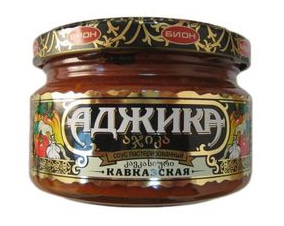
It’s really easy. Apart from the ingredients themselves and a knife, all you really need is a food processor/meat grinder/sturdy blender/some other good way to crush nuts and greens into a paste. Adzhika will keep for a few days, so if you plan to eat it all relatively soon it can sit in a food storage container in your fridge. But if you make a larger amount (as in the second recipe), you will need to put it in sealed sterile jars so that it doesn’t grow bacteria or mold. Check out this tutorial, which explains how to preserve food safely in jars.
Adzhika Recipes
(Давай приготовим!)
See below for a free recipe for adzhika. See also the free videos online. If you are interested in cooking from Russia, Ukraine, Georgia, and other places in Eurasia, make sure to see our other resources! You might also be interested in the following specialized cookbooks we’ve enjoyed:
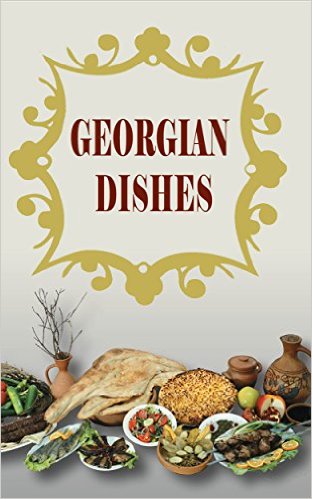 |
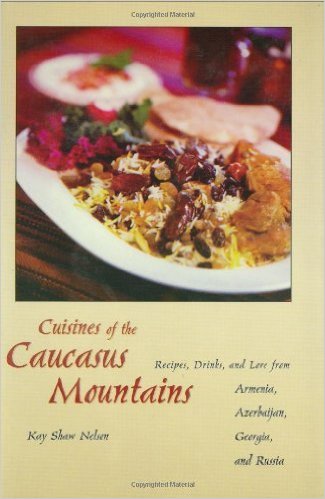 |
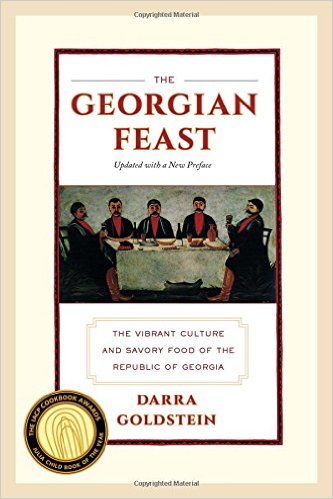 |
 |
| Абхазская зеленая аджика с грецким орехом | Abkhazian Adzhika with Walnuts |
Ингредиенты
Приготовление
|
Ingredients
Preparation
|
| Кавказская аджика | Caucasian Adzhika |
Ингредиенты
Приготовление
|
Ingredients
Preparation
|
Our Favorite Adzhika Videos
This video shows you how to make one of the more liquid-y versions of adzhika – unlike the recipes above, it contains tomatoes, carrots, and apples. An advantage for language learners is that the host reads the list of ingredients on the screen – you can practice your reading and pronunciation along with her.
This recipe is very similar to the second one above. The chef in the video uses some of the same cooking vocabulary (useful for reviewing). It’s also helpful for seeing how big the slices of pepper are supposed to be. This is a really hot adzhika – she doesn’t remove the seeds before processing! Also, there are cute goats on the wall calendar behind her.
You Might Also Like
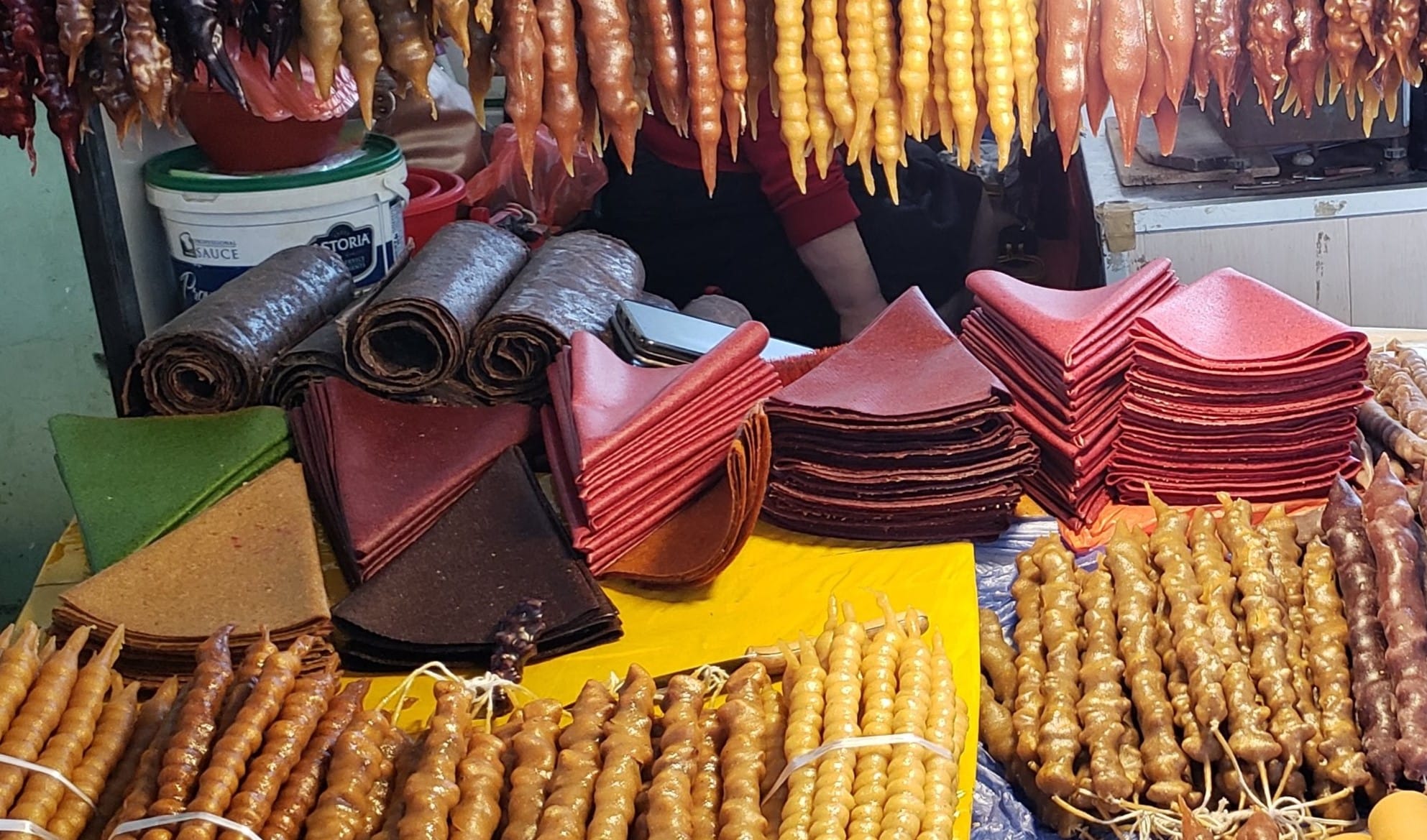
Tklapi, Pastegh, Lavashak: One Ingredient Fruit Leather from the Caucasus
Fruit leather is simple, ancient food. Like bread and roasted meat, it likely independently evolved in several places. At its most basic, it is simply mashed fruit smeared to a sheet and left to dry in the sun. The result is a flavor-intensive food that travels well and can keep for months. The oldest known […]
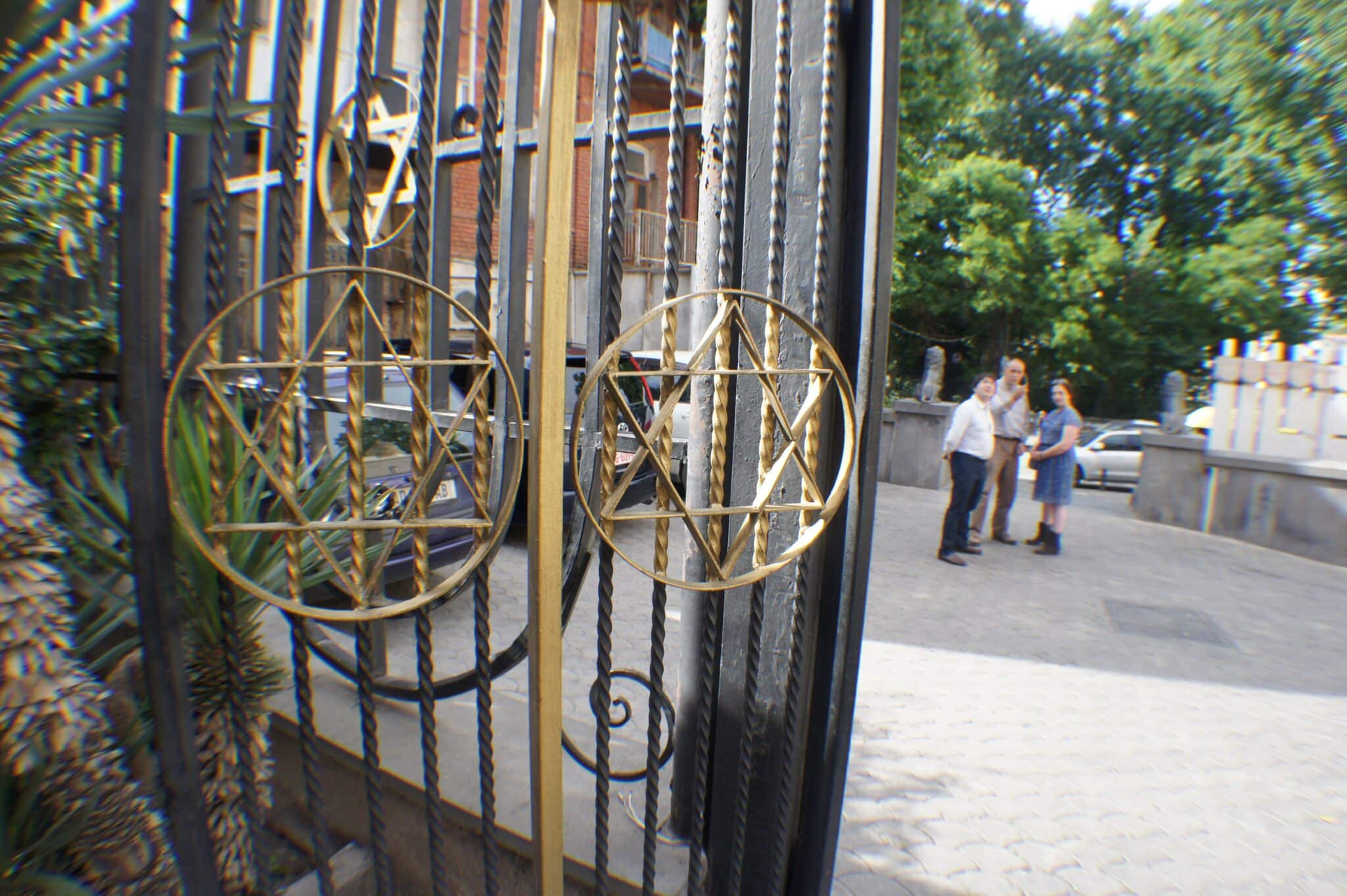
Jewish Georgia: A Brief History and Guide
This guide to travel in Georgia is tailored for Jewish-American university students preparing to study abroad in Georgia. We navigate the historical depth and modern vibrancy of Jewish life in this culturally rich country. Discover key historical sites, engage with local Jewish communities, and find practical tips on maintaining kosher practices and observing Shabbat while […]

The Habits of Nuns in Catholic and Orthodox Traditions
Despite their cloistered livelihood, nuns have found their way into many veins of popular theater and movies. However, their usual depiction, wearing black habits with a veil and carrying a rosary, is not accurate for all nuns. It is true that the symbolic meaning of the habit is consistent across both Catholic and Eastern Orthodox […]

8,000 Years of Winemaking Lives On in Georgia
Georgia is home to one of the world’s most diverse selections of native grape varieties. Evidence suggests it’s the oldest winemaking region in the world and it retains unique and ancient winemaking technologies to this day. Over millennia, winemaking has become deeply integrated into Georgian cuisine, tradition, and identity. It is present at elaborate feasts […]

Churchkhela, Sharan, and Pelamushi: Desserts Off The Vine
Strolling through a marketplace in Georgia, you might be surprised to see the array of multicolored sausage-shaped candies hanging from the stalls. These are churchkhela, a traditional snack made by dipping strings of nuts into thickened fruit juice to create a chewy exterior. In Armenia, you’ll see “sausages” known locally as sharan that are very […]

